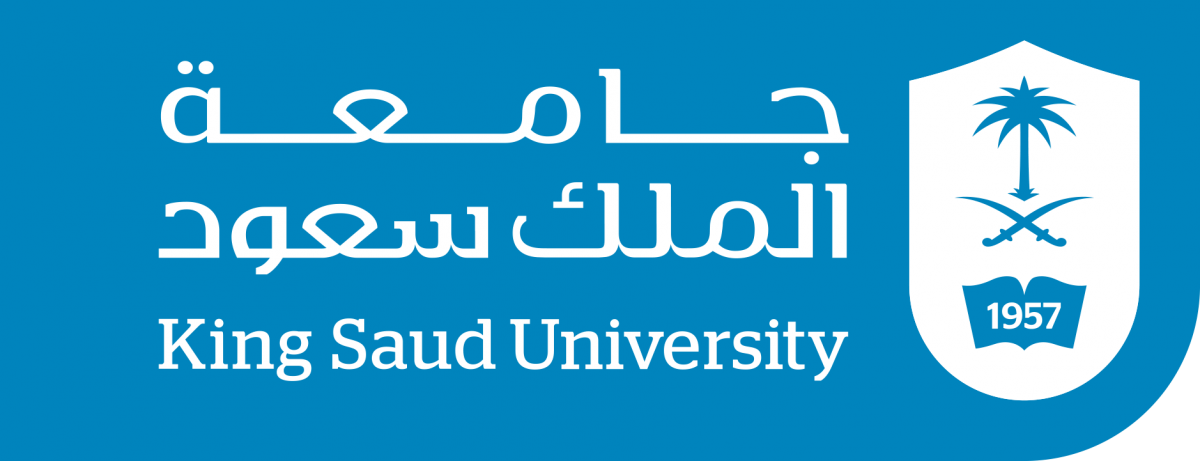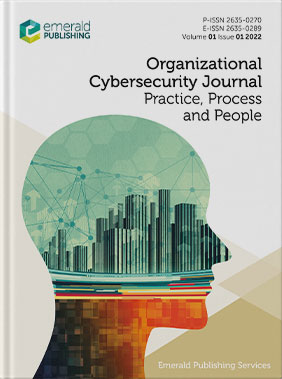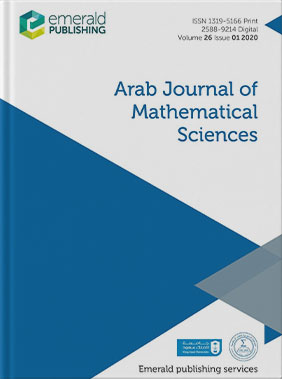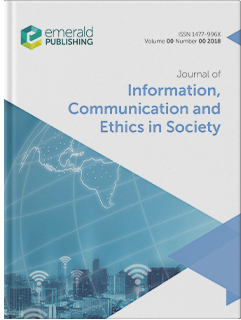Before you start
Author responsibilities
Our goal is to provide you with a professional and courteous experience at each stage of the review and publication process. There are also some responsibilities that sit with you as the author. Our expectation is that you will:
- Respond swiftly to any queries during the publication process.
- Be accountable for all aspects of your work. This includes investigating and resolving any questions about accuracy or research integrity
- Treat communications between you and the journal editor as confidential until an editorial decision has been made.
- Read about our research ethics for authorship. These state that you must:
- Include anyone who has made a substantial and meaningful contribution to the submission (anyone else involved in the paper should be listed in the acknowledgements).
- Exclude anyone who hasn’t contributed to the paper, or who has chosen not to be associated with the research.
- In accordance with COPE’s position statement on AI tools, Large Language Models cannot be credited with authorship as they are incapable of conceptualising a research design without human direction and cannot be accountable for the integrity, originality, and validity of the published work.
- If your article involves human participants, you must ensure you have considered whether or not you require ethical approval for your research, and include this information as part of your submission. Find out more about informed consent.
Research and publishing ethics
Our editors and employees work hard to ensure the content we publish is ethically sound. To help us achieve that goal, we closely follow the advice laid out in the guidelines and flowcharts on the COPE (Committee on Publication Ethics) website.
We have also developed our research and publishing ethics guidelines. If you haven’t already read these, we urge you to do so – they will help you avoid the most common publishing ethics issues.
A few key points:
- Any manuscript you submit to this journal should be original. That means it should not have been published before in its current, or similar, form. Exceptions to this rule are outlined in our pre-print and conference paper policies. If any substantial element of your paper has been previously published, you need to declare this to the journal editor upon submission. Please note, the journal editor may use Crossref Similarity Check to check on the originality of submissions received. This service compares submissions against a database of 49 million works from 800 scholarly publishers.
- Your work should not have been submitted elsewhere and should not be under consideration by any other publication.
- If you have a conflict of interest, you must declare it upon submission; this allows the editor to decide how they would like to proceed. Read about conflict of interest in our research and publishing ethics guidelines.
- By submitting your work to Emerald, you are guaranteeing that the work is not in infringement of any existing copyright.
Third party copyright permissions
Prior to article submission, you need to ensure you’ve applied for, and received, written permission to use any material in your manuscript that has been created by a third party. Please note, we are unable to publish any article that still has permissions pending. The rights we require are:
- Non-exclusive rights to reproduce the material in the article or book chapter.
- Print and electronic rights.
- Worldwide English-language rights.
- To use the material for the life of the work. That means there should be no time restrictions on its re-use e.g. a one-year licence.
Please take a few moments to read our guide to publishing permissions to ensure you have met all the requirements, so that we can process your submission without delay.
Transparency and Openness Promotion (TOP) guidelines
We are a signatory of the Transparency and Openness Promotion (TOP) Guidelines, a framework that supports the reproducibility of research through the adoption of transparent research practices. That means we encourage you to:
- Cite and fully reference all data, program code, and other methods in your article.
- Include persistent identifiers, such as a Digital Object Identifier (DOI), in references for datasets and program codes. Persistent identifiers ensure future access to unique published digital objects, such as a piece of text or datasets. Persistent identifiers are assigned to datasets by digital archives, such as institutional repositories and partners in the Data Preservation Alliance for the Social Sciences (Data-PASS).
- Follow appropriate international and national procedures with respect to data protection, rights to privacy and other ethical considerations, whenever you cite data. For further guidance please refer to our research and publishing ethics guidelines. For an example on how to cite datasets, please refer to the references section below.
Prepare your submission
Manuscript support services
We are pleased to partner with Editage, a platform that connects you with relevant experts in language support, translation, editing, visuals, consulting, and more. After you’ve agreed a fee, they will work with you to enhance your manuscript and get it submission-ready.
This is an optional service for authors who feel they need a little extra support. It does not guarantee your work will be accepted for review or publication.
Visit Editage
Manuscript requirements
Before you submit your manuscript, it’s important you read and follow the guidelines below. You will also find some useful tips in our structure your journal submission how-to guide.
| Format | Article files should be provided in Microsoft Word format While you are welcome to submit a PDF of the document alongside the Word file, PDFs alone are not acceptable. LaTeX files can also be used but only if an accompanying PDF document is provided. Acceptable figure file types are listed further below. |
| Article length / wordcount | Articles should preferably be a maximum of 5000 words in length. This includes all text including references and appendices. Tables and Figures necessary to support the research findings should be included. Tables and figures should contain a self-explanatory captions. |
| Article title | A concisely worded title should be provided. |
| Author details | The names of all contributing authors should be added to the ScholarOne submission; please list them in the order in which you’d like them to be published. Each contributing author will need their own ScholarOne author account, from which we will extract the following details: - Author email address.
- Author name. We will reproduce it exactly, so any middle names and/or initials they want featured must be included.
- Author affiliation. This should be where they were based when the research for the paper was conducted.
In multi-authored papers, it’s important that ALL authors that have made a significant contribution to the paper are listed. Those who have provided support but have not contributed to the research should be featured in an acknowledgements section. You should never include people who have not contributed to the paper or who don’t want to be associated with the research. Read about our research ethics for authorship. |
| Acknowledgements | If you want to include any acknowledgements, save them in a separate Microsoft Word document and upload the file with your submission. |
| Research funding | Your article must reference all sources of external research funding in the acknowledgements section. You should describe the role of the funder or financial sponsor in the entire research process, from study design to submission. |
| Structured abstract | All submissions must include a structured abstract, following the format outlined below. These four sub-headings and their accompanying explanations must always be included: - Purpose
- Design/methodology/approach
- Findings
- Originality
The following three sub-headings are optional and can be included, if applicable: - Research limitations/implications
- Practical implications
- Social implications
You can find some useful tips in our write an article abstract how-to guide.
The maximum length of your abstract should be 250 words in total, including keywords and article classification (see the sections below). |
| Keywords | Your submission should include up to 12 appropriate and short keywords that capture the principal topics of the paper. Our Creating an SEO-friendly manuscript how to guide contains some practical guidance on choosing search-engine friendly keywords. Please note, while we will always try to use the keywords you’ve suggested, the in-house editorial team may replace some of them with matching terms to ensure consistency across publications and improve your article’s visibility. |
| Article classification | During the submission process, you will be asked to select a type for your paper; the options are listed below. If you don’t see an exact match, please choose the best fit: - Research Article
- Review Paper
- Mini Review
- Short Communication
- Editorials
- Book Reviews
You will also be asked to select a category for your paper. The options for this are listed below. If you don’t see an exact match, please choose the best fit: - Research Article
Reports on any type of research undertaken by the author(s), including:
- The construction or testing of a model or framework
- Action research
- Testing of data, market research or surveys
- Empirical, scientific or clinical research
- Papers with a practical focus
- Review Paper
Ideally a review paper takes stock of research in the particular field of research in a comprehensive manner and review concludes in identification gaps in research and future trends, as the case may be. - Mini Review
It is a brief and concise overview of recent research in a specific field well in the scope of this Journal and supported by bibliography belonging to quality sources. The paper is spread over 2000-3000 words. - Short Communication
A Short communication generally is an article that provides counter arguments or response to a published work within the scope of ACI. The submissions need not follow a strict paper outline and should preferably have between 2000 and 3,000 words. Sometimes, it is a piece of work demanding quick sharing with the scientific community. Such submissions are peer reviewed as true for other articles. - Editorials
Editorial is an invited submission involving member of the Editorial Board or Guest Editor. The purpose of an editorial is to provide a write up on specific theme usually about a recent topic of interest. Editorial of a Special Issue provides a crisp and sequential introduction to the topics covered in the issue. - Book Reviews:
Book review aims at providing insight and opinion on recently published scholarly books. Such submissions are short articles introducing new literature in the field.
|
| Headings | Headings must be concise, with a clear indication of the required hierarchy.
The preferred format is for first level headings to be in bold, and subsequent sub-headings to be in medium italics. |
| Notes/endnotes | Notes or endnotes should only be used if absolutely necessary. They should be identified in the text by consecutive numbers enclosed in square brackets. These numbers should then be listed, and explained, at the end of the article. |
| Figures | All figures (charts, diagrams, line drawings, webpages/screenshots, and photographic images) should be submitted electronically. Both colour and black and white files are accepted.
There are a few other important points to note: - All figures should be supplied at the highest resolution/quality possible with numbers and text clearly legible.
- Acceptable formats are .ai, .eps, .jpeg, .bmp, and .tif.
- Electronic figures created in other applications should be supplied in their original formats and should also be either copied and pasted into a blank MS Word document, or submitted as a PDF file.
- All figures should be numbered consecutively with Arabic numerals and have clear captions.
- All photographs should be numbered as Plate 1, 2, 3, etc. and have clear captions.
- All figure/table captions should include the necessary credit line, acknowledgement, or attribution if you have been given permission to use the figure/table; if the figure/table is the property of the author(s), this should be acknowledged in the caption.
|
| Tables | Tables should be typed and submitted in a separate file to the main body of the article. The position of each table should be clearly labelled in the main body of the article with corresponding labels clearly shown in the table file. Tables should be numbered consecutively in Roman numerals (e.g. I, II, etc.).
Give each table a brief title. Ensure that any superscripts or asterisks are shown next to the relevant items and have explanations displayed as footnotes to the table, figure or plate. |
| Supplementary files | Where tables, figures, appendices, and other additional content are supplementary to the article but not critical to the reader’s understanding of it, you can choose to host these supplementary files alongside your article on Insight, Emerald’s content-hosting platform (this is Emerald's recommended option as we are able to ensure the data remain accessible), or on an alternative trusted online repository. Emerald recommends authors that they use the following two trusted lists of repositories: https://commons.datacite.org/repositories and https://www.re3data.org to identify the most suitable repository. Any and all supplementary material must be present/provided with the initial submission. If you choose to host your supplementary files on Insight, you must submit these as separate files alongside your article. Files should be clearly labelled in such a way that makes it clear they are supplementary; Emerald recommends that the file name is descriptive and that it follows the format 'Supplementary_material_appendix_1' or 'Supplementary tables'. All supplementary material must be mentioned at the appropriate moment in the main text of the article; there is no need to include the content of the file only the file name. A link to the supplementary material will be added to the article during production, and the material will be made available alongside the main text of the article at the point of EarlyCite publication. Please note that Emerald will not make any changes to the material; it will not be copy-edited or typeset, and authors will not receive proofs of this content. Emerald therefore strongly recommends that you style all supplementary material ahead of acceptance of the article.
Emerald Insight can host the following file types and extensions: - Adobe Acrobat (.pdf)
- MS Word document (.doc, .docx)
- MS Excel (.xls, xlsx)
- MS PowerPoint (.pptx)
- Image (.png, .jpeg, .gif)
- Plain ASCII text (.txt)
- PostScript (.ps)
- Rich Text Format (.rtf)
If you choose to use an alternative trusted online repository, you should ensure that the supplementary material is hosted on the repository ahead of submission, and then include a link only to the repository within the article. It is the responsibility of the submitting author to ensure that the material is free to access and that it remains permanently available. Where an alternative trusted online repository is used, the files hosted should always be presented as read-only; please be aware that such usage risks compromising your anonymity during the review process if the repository contains any information that may enable the reviewer to identify you; as such, we recommend that all links to alternative repositories are reviewed carefully prior to submission. Please note that extensive supplementary material may be subject to peer review; this is at the discretion of the journal Editor and dependent on the content of the material (for example, whether including it would support the reviewer making a decision on the article during the peer review process). |
| References | References: The Vancouver style reference format should be followed. In-text citations are to be numbered consecutively in parentheses. In the reference list, citations should be given in the same numbered order as in the text. All authors should be quoted for papers with up to six authors, and for papers with more than six authors, the first six should be quoted followed by “et al.” Periodical (Journal) abbreviations should follow those used by PubMed (http://www.ncbi.nlm.nih.gov/nlmcatalog/journals). Some examples of how to quote references are given below. Journal article: - Kwan I, Mapstone J. Visibility aids for pedestrians and cyclists: a systematic review of randomised controlled trials. Accid Anal Prev. 2004; 36(3): 305-12.
- Rose ME, Huerbin MB, Melick J, Marion DW, Palmer AM, Schiding JK, et al. Regulation of interstitial excitatory amino acid concentrations after cortical contusion injury. Brain Res. 2002 May; 935(1-2): 40-6.
- Montero D, Roche E, Martinez-Rodriguez A. The impact of aerobic exercise training on arterial stiffness in pre- and hypertensive subjects: a systematic review and meta-analysis. Int J Cardiol. 2014 May; 173(3): 361-8. doi: 10.1016/j.ijcard.2014.03.072
Entire book: - Miles DA, Van Dis ML, Williamson GF, Jensen CW. Radiographic imaging for the dental team. 4th ed. St. Louis: Saunders Elsevier; 2009.
Book chapter: - Meltzer PS, Kallioniemi A, Trent JM. Chromosome alterations in human solid tumors. In: Vogelstein B, Kinzler KW, editors. The genetic basis of human cancer. New York: McGraw-Hill; 2002. p.93-113.
Electronic journal article (The most recent date of access must be given): - Stone D, Harper BJ, Lynch I, Dawson K, Harper SL. Exposure assessment: recommendations for nanotechnology-based pesticides. Int J Occup Environ Health. 2010 Oct-Dec; 16(4): 467-74 [cited 2010 Jan 10]. Available from: http://www.ncbi.nlm.nih.gov/pubmed/21222390
Electronic book/monograph on the Internet: - Donaldson MS, editor. Measuring the quality of health care [monograph on the internet]. Washington: National Academy Press; 1999 [cited 2004 Oct 8]. Available from: http://legacy.netlibrary.com/
Proceedings article: - Christensen S, Oppacher F. An analysis of Koza's computational effort statistic for genetic programming. In: Foster JA, Lutton E, editors. Genetic programming. EuroGP: Proceedings of the 5th European Conference on Genetic Programming; 2002 Apr 3-5; Berlin: Springer; 2002. p.182-91.
Website [updated = Last Update Date; cited = Access Year Access Date]: - National Cancer Institute. Fact sheet: targeted cancer therapies. [updated: 2014 April 25; cited 2014 June 2]. Available from: http://www.cancer.gov/cancertopics/factsheet/Therapy/targeted#q1
|
Submit your manuscript
There are a number of key steps you should follow to ensure a smooth and trouble-free submission.
Double check your manuscript
Before submitting your work, it is your responsibility to check that the manuscript is complete, grammatically correct, and without spelling or typographical errors. A few other important points:
- Give the journal aims and scope a final read. Is your manuscript definitely a good fit? If it isn’t, the editor may decline it without peer review.
- Does your manuscript comply with our research and publishing ethics guidelines?
- Have you cleared any necessary publishig permissions?
- Have you followed all the formatting requirements laid out in these author guidelines?
- Does the manuscript contain any information that might help the reviewer identify you? This could compromise the blind peer review process. A few tips:
- If you need to refer to your own work, use wording such as ‘previous research has demonstrated’ not ‘our previous research has demonstrated’.
- If you need to refer to your own, currently unpublished work, don’t include this work in the reference list.
- Any acknowledgments or author biographies should be uploaded as separate files.
- Carry out a final check to ensure that no author names appear anywhere in the manuscript. This includes in figures or captions.
You will find a helpful submission checklist on the website Think.Check.Submit.
The submission process
All manuscripts should be submitted through our editorial system by the corresponding author.
A separate author account is required for each journal you submit to. If this is your first time submitting to this journal, please choose the Create an account or Register now option in the editorial system. If you already have an Emerald login, you are welcome to reuse the existing username and password here.
Please note, the next time you log into the system, you will be asked for your username. This will be the email address you entered when you set up your account.
Don't forget to add your ORCiD ID during the submission process. It will be embedded in your published article, along with a link to the ORCiD registry allowing others to easily match you with your work.
Don’t have one yet? It only takes a few moments to register for a free ORCiD identifier.
Visit the ScholarOne support centre for further help and guidance.
What you can expect next
You will receive an automated email from the journal editor, confirming your successful submission. It will provide you with a manuscript number, which will be used in all future correspondence about your submission. If you have any reason to suspect the confirmation email you receive might be fraudulent, please contact our Rights team.
Post submission
Review and decision process
Each submission is checked by the editor. At this stage, they may choose to decline or unsubmit your manuscript if it doesn’t fit the journal aims and scope, or they feel the language/manuscript quality is too low.
If they think it might be suitable for the publication, they will send it to at least two independent referees for double-anonymous peer review. Once these reviewers have provided their feedback, the editor may decide to accept your manuscript, request minor or major revisions, or decline your work.
While all journals work to different timescales, the goal is that the editor will inform you of their first decision within 60 days.
During this period, we will send you automated updates on the progress of your manuscript via our submission system, or you can log in to check on the current status of your paper. Each time we contact you, we will quote the manuscript number you were given at the point of submission. If you receive an email that does not match these criteria, it could be fraudulent and we recommend you email [email protected].
If your submission is accepted
Copyright
All accepted authors are sent an email with a link to a licence form. This should be checked for accuracy, for example whether contact and affiliation details are up to date and your name is spelled correctly, and then returned to us electronically. If there is a reason why you can’t assign copyright to us, you should discuss this with your journal content editor. You will find their contact details on the editorial team section above.
Proofing and typesetting
Once we have received your completed licence form, the article will pass directly into the production process. We will carry out editorial checks, copyediting, and typesetting and then return proofs to you (if you are the corresponding author) for your review. This is your opportunity to correct any typographical errors, grammatical errors or incorrect author details. We can’t accept requests to rewrite texts at this stage.
When the page proofs are finalised, the fully typeset and proofed version of record is published online. This is referred to as the EarlyCite version. While an EarlyCite article has yet to be assigned to a volume or issue, it does have a digital object identifier (DOI) and is fully citable. It will be compiled into an issue according to the journal’s issue schedule, with papers being added by chronological date of publication.
How to share your paper
Visit our author rights page to find out how you can reuse and share your work.
To find tips on increasing the visibility of your published paper, read about how to promote your work.
Correcting inaccuracies in your published paper
Sometimes errors are made during the research, writing and publishing processes. When these issues arise, we have the option of withdrawing the paper or introducing a correction notice. Find out more about our article withdrawal and correction policies.
Frequently asked questions
Is there a submission fee
for the journal? | Applied Computing and Informatics is published under a diamond OA arrangement, in that all charges for publishing an OA article in the Journal are funded by King Saud University. Therefore, there is no charge to the author. |
How can I become
a reviewer for a journal? | Please contact the editor for the journal, with a copy of your CV. You will find their contact details on the editorial team tab on this page. |
| Who do I contact if I want to find out which volume and issue my accepted paper will appear in? | Typically, papers are added to an issue according to their date of publication. If you would like to know in advance which issue your paper will appear in, please contact the content editor of the journal. You will find their contact details on the editorial team tab on this page. Once your paper has been published in an issue, you will be notified by email. |
Who do I contact if I have
a query about my submission? | Please email the journal editor – you will find their contact details on the editorial team tab on this page. If you ever suspect an email you’ve received from Emerald might not be genuine, you are welcome to verify it with the content editor for the journal, whose contact details can be found on the editorial team tab on this page. Alternatively, you can email our Rights team. |
Is my paper suitable
for the journal? | If you’ve read the aims and scope on the journal landing page and are still unsure whether your paper is suitable for the journal, please email the editor and include your paper's title and structured abstract. They will be able to advise on your manuscript’s suitability. You will find their contact details on the Editorial team tab on this page. |
| How do I make a change to the list of authors once the manuscript has been submitted? | Authorship and the order in which the authors are listed on the paper should be agreed prior to submission. We have a right first time policy on this and no changes can be made to the list once submitted. If you have made an error in the submission process, please email the Journal Editorial Office who will look into your request – you will find their contact details on the editorial team tab on this page. |









